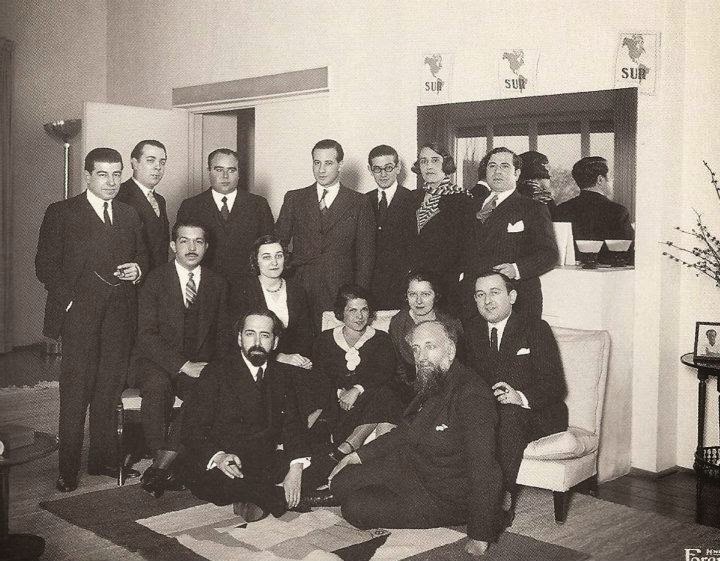
Victoria Ocampo (1890-1979), her world-renowned literary journal Sur, and her publishing house of the same name, all loom large over Latin American cultural production in the twentieth century. As a member of an elite Argentine family, Ocampo was able to travel to Europe throughout her life. It was here where she formed close relationships with a large number of writers and artists. Although she quickly made new friends and contacts throughout the continent, who all expressed deep admiration and appreciate for her creativity, intelligence, and aesthetic sensibilities, Ocampo still felt that she was an outsider, which was only confirmed when many of these same acquaintances displayed their ignorance about South America: “Was Buenos Aires in Brazil? she was asked. Were the natives civilized? How did she stand the tropical heat all the time?” (Meyer 104). Fueled by her discontent with Latin America’s alienation and isolation from Europe, Ocampo launched the literary journal Sur that “would be a cultural bridge between the Americas, a forum for the best thinkers of both continents” (Meyer 107). Broadly speaking, she conceptualized her literary journal, and publishing house of the same name, as a way to connect not only North and South America, but also Europe and the Americas.
Sur and the Editorial Sur – teeming with original essays, translations, prologues, and poetry – are primary examples of a flourishing print network. More specifically, in the pages of these mediums we find the names of authors, translators, editors, and general contributors as well as those of printers, artists, and graphic designers, all of whom collaborated, communicated, and ultimately formed a part of her network. Systematically adding layers of biographical and professional information about each person who aided in the creation of these literary materials provides us with a more nuanced understanding of how these groups emerged, and is also a necessary first step in translating these print networks into the digital. In tandem with these personographies, the private correspondence from, to, or about Victoria Ocampo provides a second major data source for translating her print network to the digital. These personal documents enhance our understanding of the infrastructure of any given network, especially the less visible personal details about how and why people met, interacted, and ultimately worked together. More specifically, crucial channels of direct communication and indirect communication emerge from these letters, which provide insight into the level of intimacy and the types of relationships that certain individuals fostered. In addition to foregrounding the intricate circuits of conversation, collaboration, and creation that blossomed in Argentina during this time, it is also important to generate an archive of metadata about the physical aspects of these letters, magazines, journals, and books that link all of the involved intellectuals in the move from print to pixel.
By translating key data from the various books and magazines that these two literary venues generated, we acquire new means of understanding and interacting with the material outputs of cultural production. In other words, we encounter these documents anew, and begin to conceive of them not as the production of one individual at one specific moment in time, but rather as the products of an entire network of connected individuals working together in unique spaces and times.